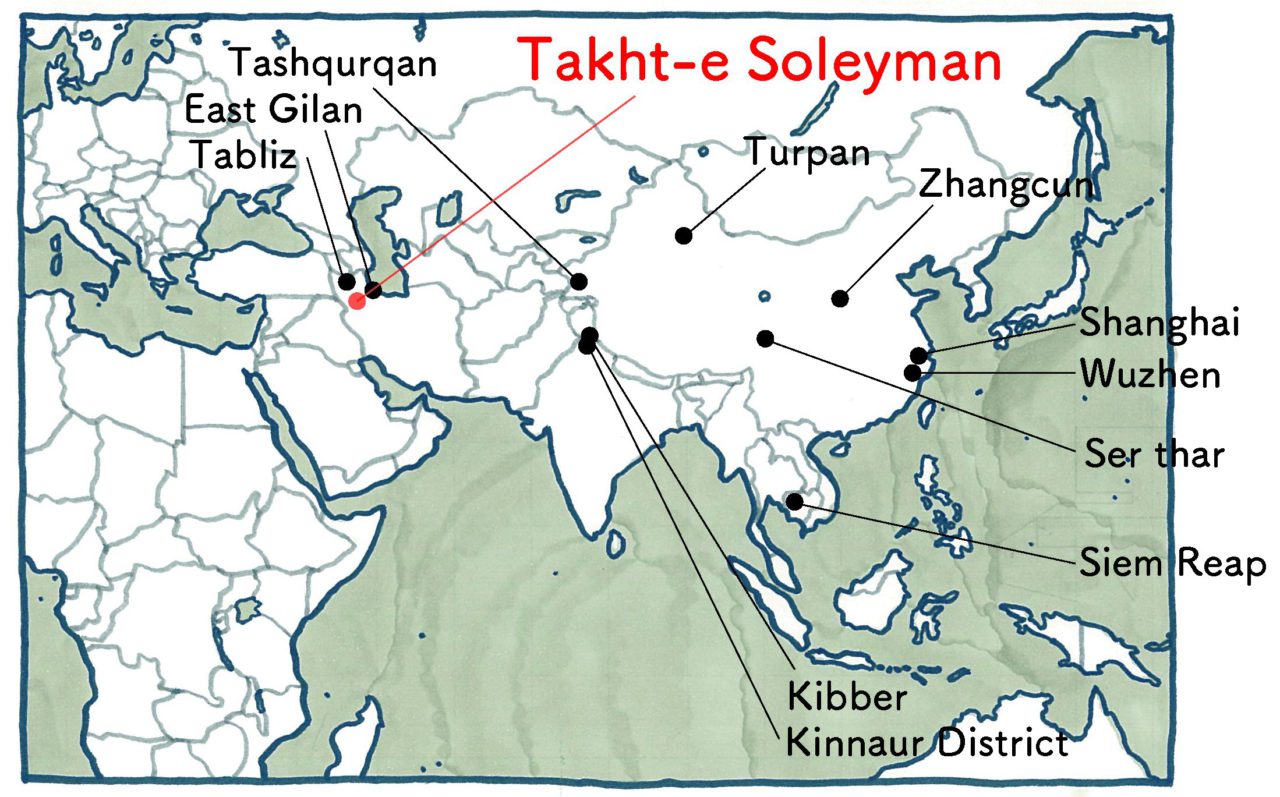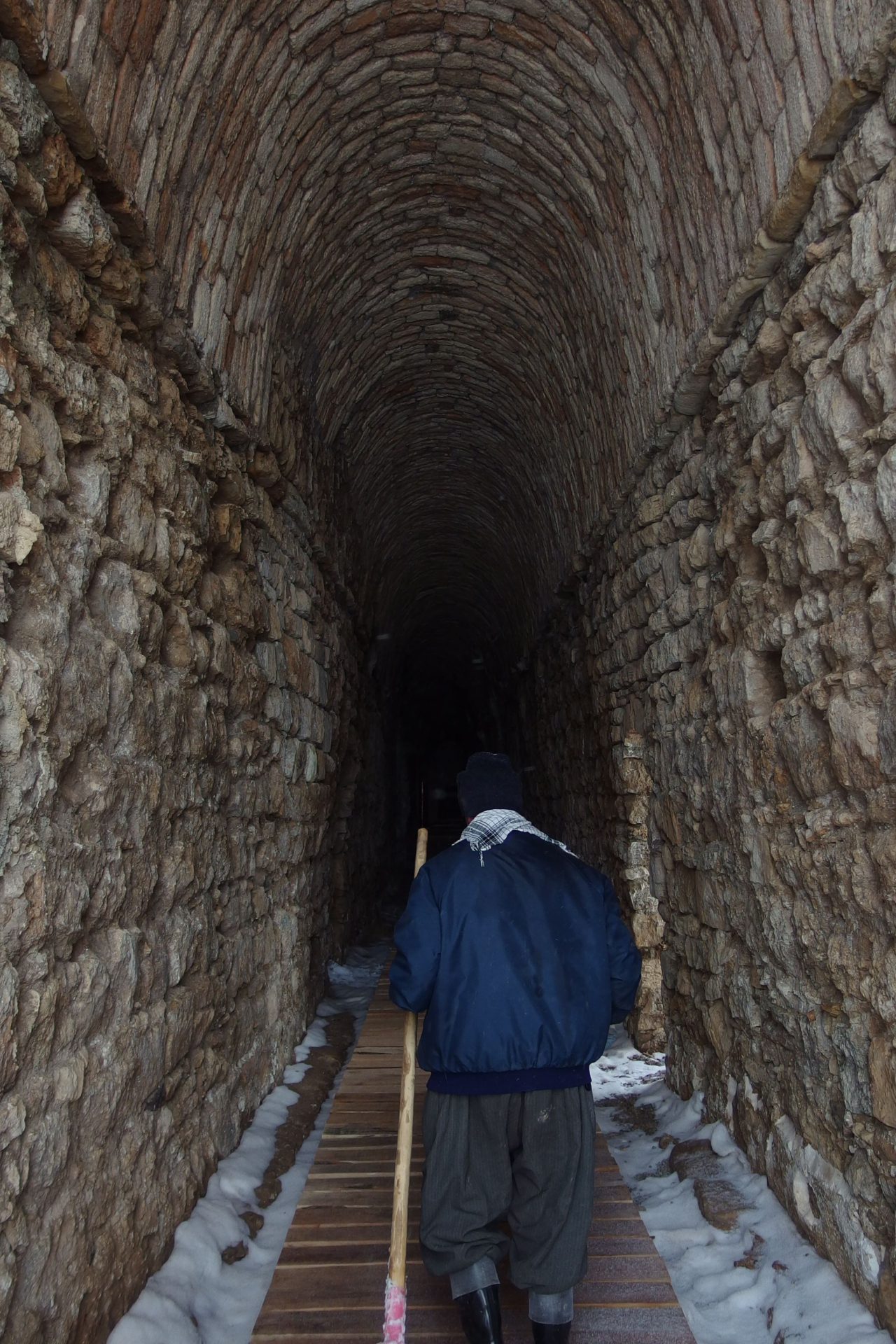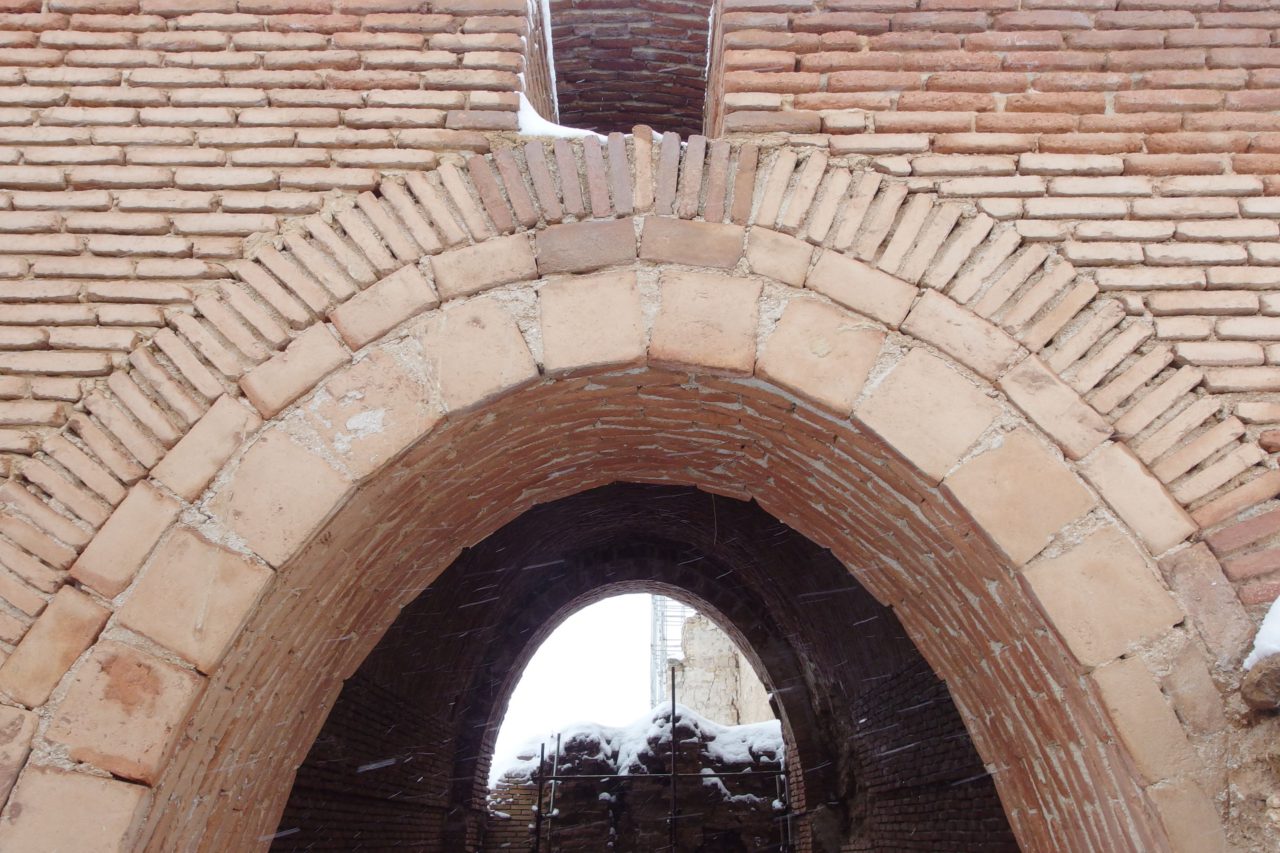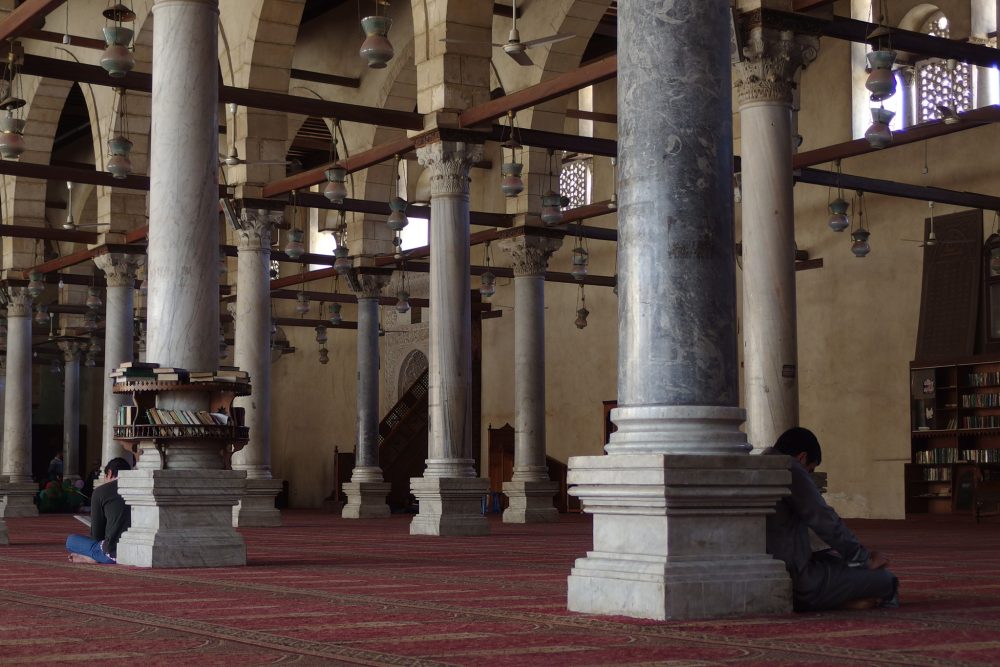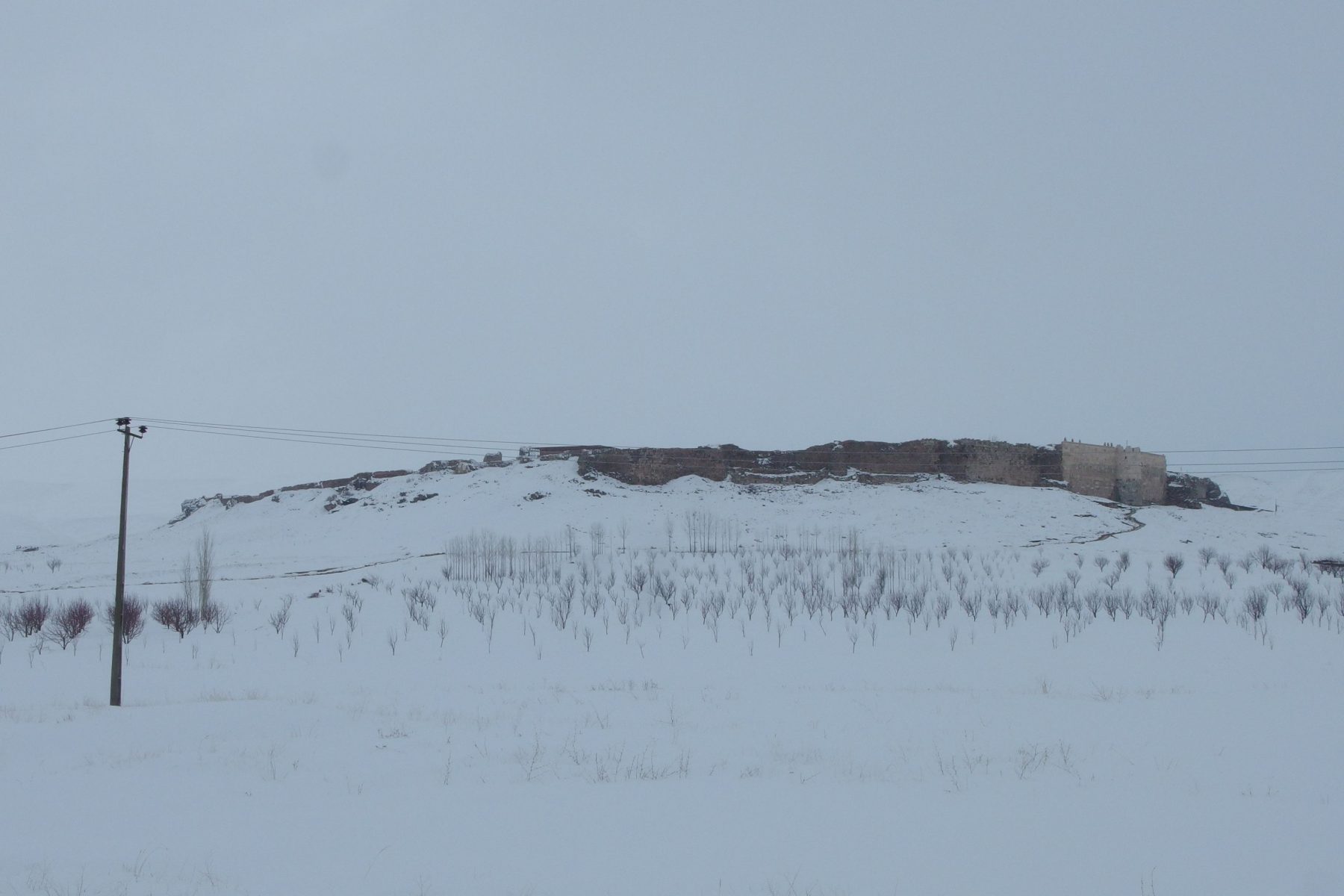
Series Traveling Asia through a Window
Starting by Surrounding: Takht-e Soleymān, Iran
03 Jul 2019
I took a cheap shared taxi from Zanjan in northwest Iran, headed next to the ancient ruins of Takht-e Soleymān. An archeological site centered around a massive crater lake, Takht-e Soleymān is said to be a Zoroastrian holy site. The current remains are primarily from the age of the Sasanian dynasty (226-651 CE), when Zoroastrianism was a state religion, but the site is said to go back to before the Common Era, with additions being made over a long period of time.
We continued to climb up mountains as the taxi headed toward our destination a whole 150 kilometers away. Beyond its windows stretched wastelands that struck me as all but uninhabitable. The temperature had already dropped to the single digits Centigrade. Inside the car, my driver offered us some warm chai, a strong tea. It seems that an Iranian way of drinking it is to put sugar cubes in one’s mouth and melt them as you drink. Eventually, the wastelands turned to a snowscape.
When we arrived at our destination two hours later, the place seemed deserted, and a light blizzard had already started around us. I felt a tinge of unease as I watched the taxi leave with its other passengers. I could see only Takht-e Soleymān’s ramparts in this sprawling snowscape, surrounding a slight hill.
-

Takht-e Soleymān from afar
Entering inside the ramparts, I saw the deep blue waters of the crater lake as steam ever-so-slightly rose from its surface. The lake is said to be about a hundred meters in both diameter and depth. Next to it remain a number of facilities, such as the fire temple once used for Zoroastrian ceremonies. A worker who cleaned the area was kind enough to guide me as the blizzard continued.
-
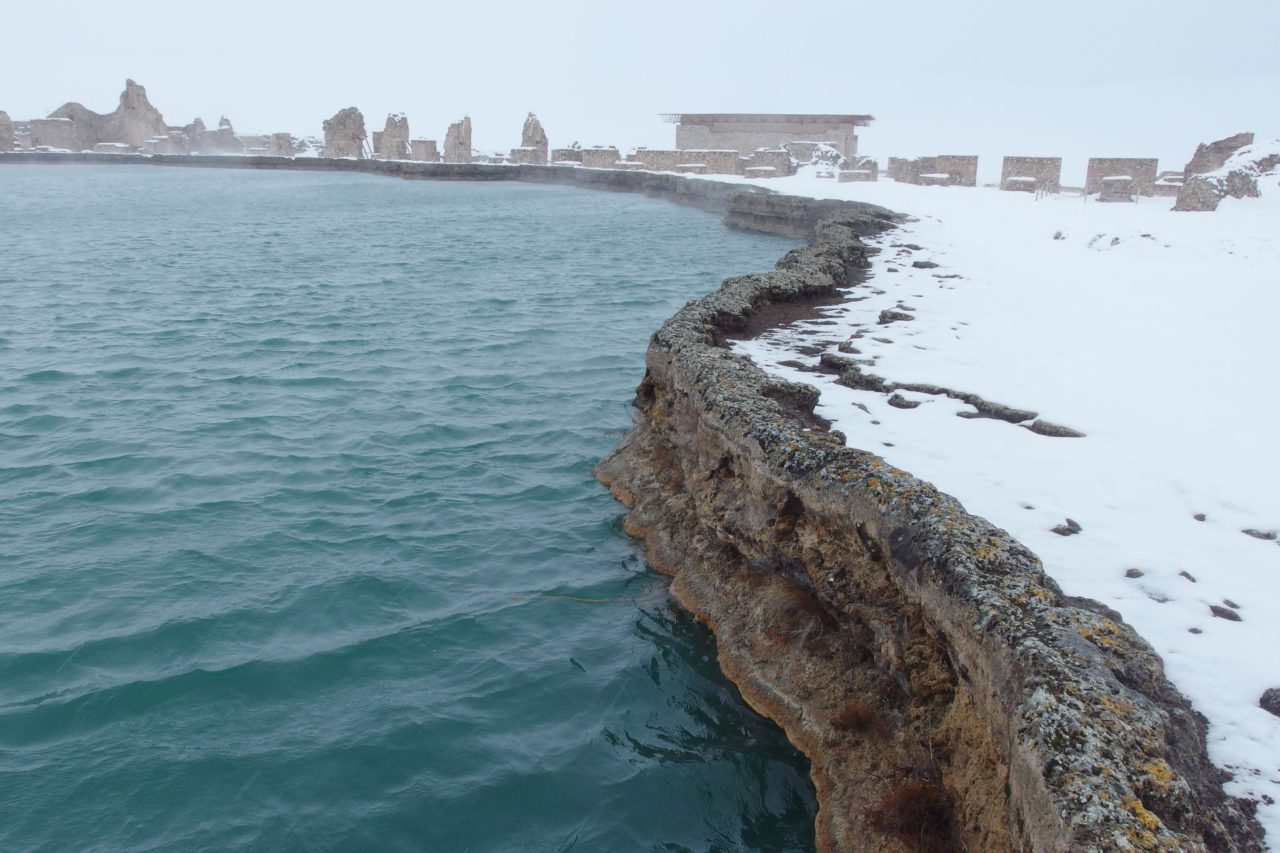
The hundred-meter-deep crater lake. The snow around it is melting.
Sasani-aan! Mongol! Is-laam! the man said, pointing his shovel at one site after the next as he informed me of the ages in which the sites were originally built (though listening to him, I wasn’t sure of what he was trying to say at all.)
What drew my eye among these were the corridors from the time of the Sasanian dynasty. The long-stretching vault tunnels go on for so long that one can’t see what lies beyond them. What is notable about the architecture of the Sasanian dynasty, a heavy influence on Iran’s Islamic architecture, are the deep arched spaces known as iwans. These strange, continuous, tall arches are one possible example of an extremely simple version of this technology. Though the majority of these have surely been repaired, openings large enough for a human to fit inside could be found here and there in the corridor, and the older man played the part of one of the soldiers who may have once stood in these.
-
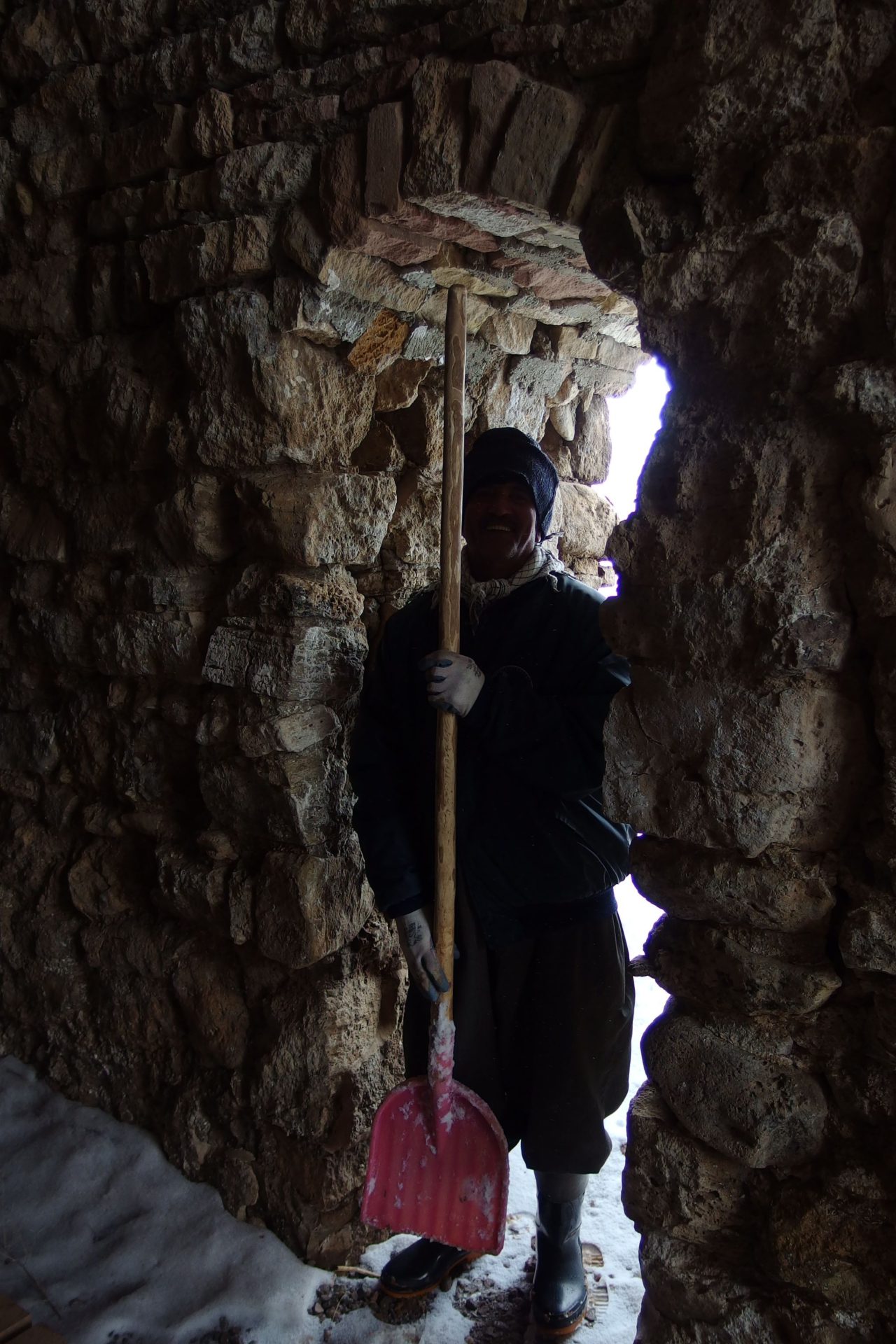
Vault corridors
In another area said to once be inhabited, light smoothly painted the ceiling as it came through openings created by an arched entrance and an opening built above it. Many of the formerly inhabited buildings shared this building trait, where a window too small for a person to possibly fit through was created in addition to an entrance. There must have been a need to create these areas that provided lighting, as the structures would become pitch black if the door was closed. Windows such as these, created out of necessity when not enough space was present to build other windows, reminded me of the yaodong shelters I saw a few months earlier in China.
-
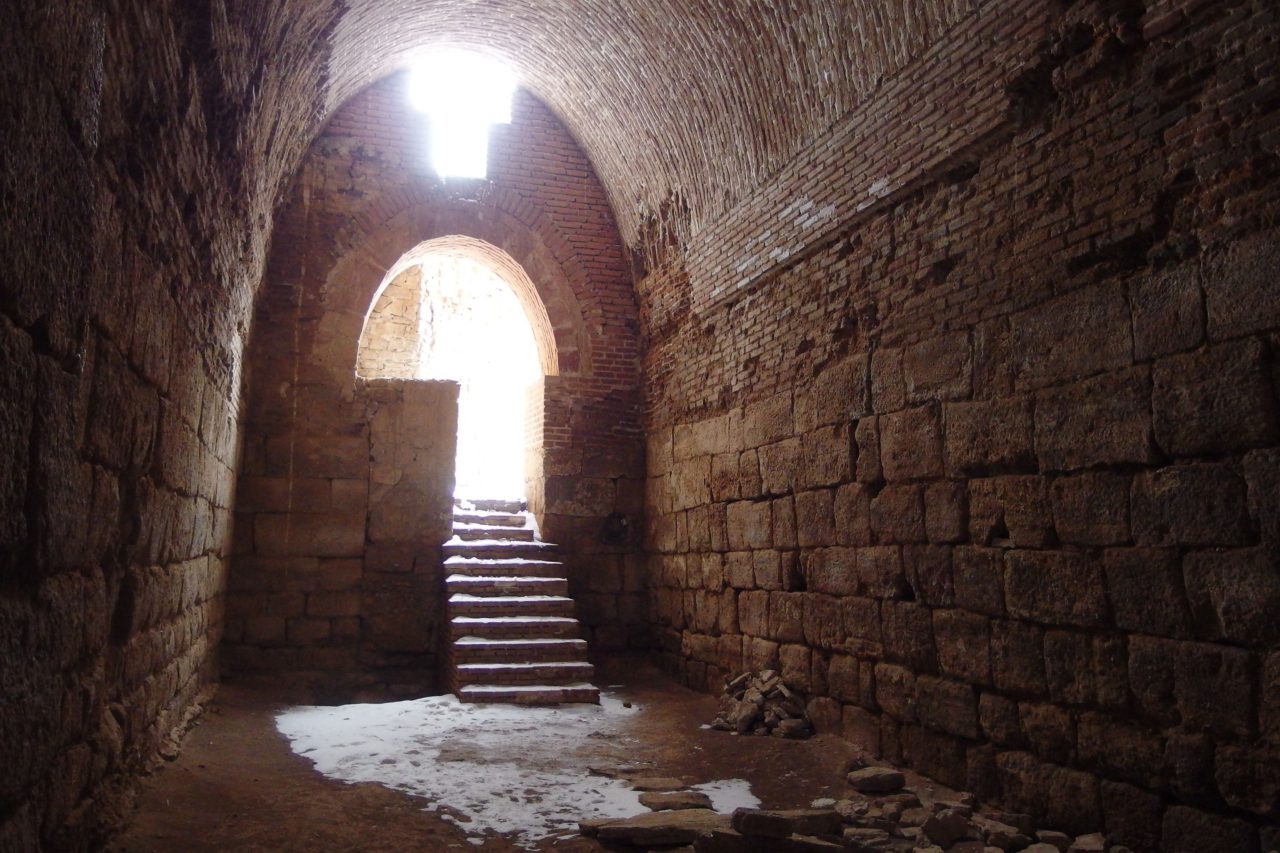
Inhabited sites
While I did look around the site, I couldn’t get a grasp of its entirety due to the snow. Just as I started to worry about the gradually strengthening blizzard, I realized I had no way of getting home. At a loss as to what to do, I tried visiting a small building next to the site, and a man came out of it. He told me he lived there as a researcher.
According to him, the water in the crater lake was unpotable, and that even recently someone entered it, only to never be found again. To people, the lake is a somewhat frightening existence, a dangerous hole-like presence. In fact, we don’t know much about how the crater lake was used. Perhaps it may have been used in agriculture, or to enshrine the dead. But, just as suggested by the legend that a king once sealed monsters within the lake, the Zoroastrians must have once conducted important rites in this place. As the researcher told me this, he showed me pictures of rituals held in recent years.
The crater lake is an environmental singularity and holds an important meaning in the history of the region. Looking at a layout of it, one can see that these ruins surround the lake, which is to say that the original intention was to make the lake their own.
This act of surrounding could be said to be the most primal act of architecture in Iran’s great wilderness. The Zoroastrians are also known as “fire-worshippers” due to their belief of fire as holy, but when one considers that an area covered in rocks and earth, not trees, is required to create a closed environment needed to “surround” (enshrine) fire, we can see a possible connection on a deep level to architectural developments such as arches and domes.
-
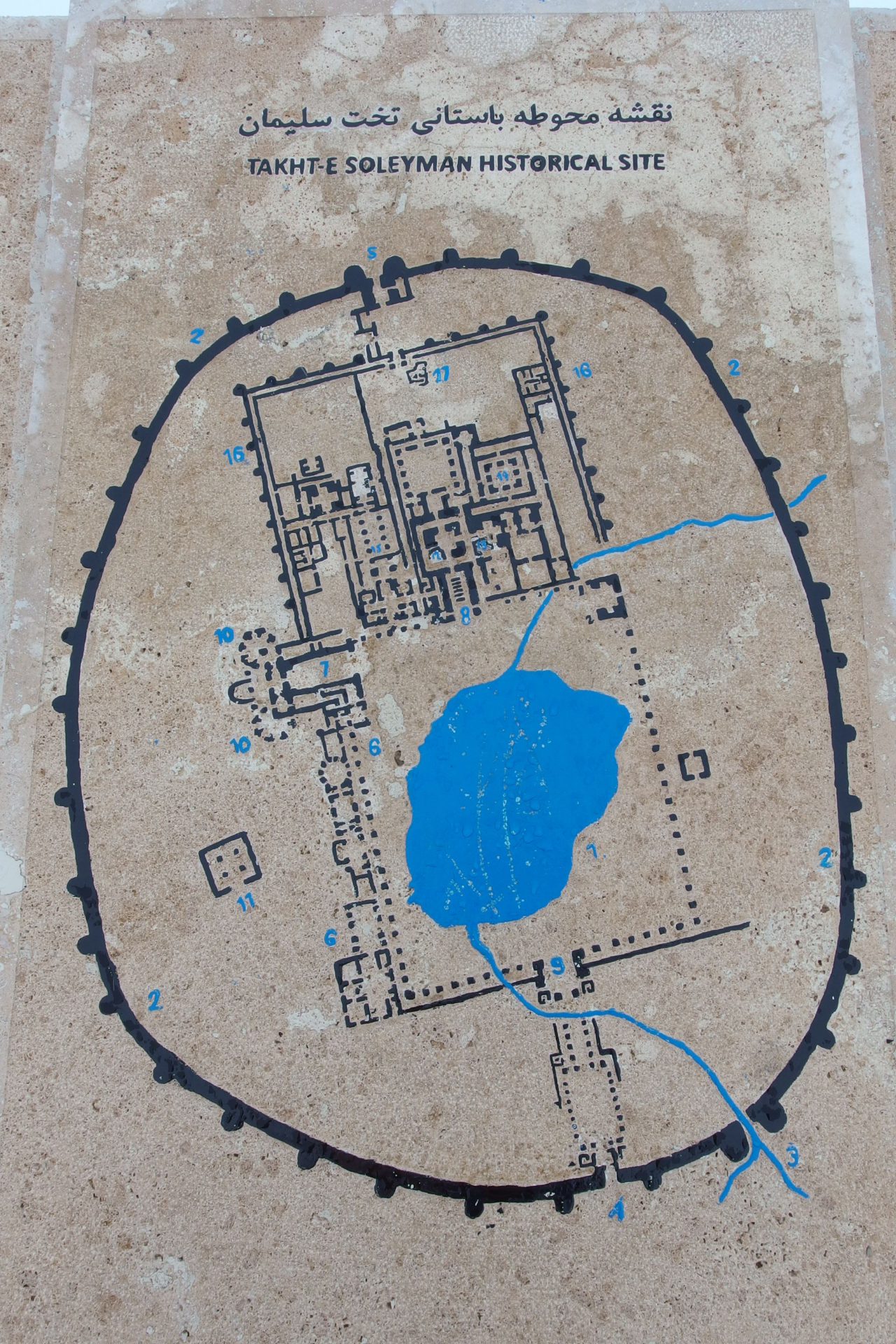
A layout of Takht-e Soleymān. One gets a sense from this that these people wished to make the lake their own.
I could see this massive hole that was the crater lake opening its mouth wide, surrounded by a white landscape as it melted any surrounding snow. It wasn’t hard to imagine just how important this warm lake before me was to this place.
After saying goodbye to the researcher, I wandered in the blizzard for about a half hour. Though I nearly needed to be rescued, I was able to hitchhike, and a friendly Iranian took me to the closest town. It was just about a new day by the time I returned to reality and arrived in my warm hotel with both walls and a roof.
Ryuki Taguma
Taguma was born in Shizuoka prefecture in 1992 and grew up in Tokyo. In 2014, he graduated from the Department of Architecture (Creative Science and Engineering) of Waseda University. He received a gold medal for his graduation project in architecture and received top recognition for his graduation thesis. From April 2014 he began life as a graduate student in architectural history, studying under Norihito Nakatani. In June of 2014 he proposed a restoration plan for residents of Izu Ōshima for a sediment-related disaster. This would become his graduation project. In 2015 he took a year off from school to travel around villages and folk houses in 11 countries in Asia and the Middle East, visiting countries from China to Israel. In Yilan County,Taiwan, he worked as an intern at Fieldoffice Architects.

